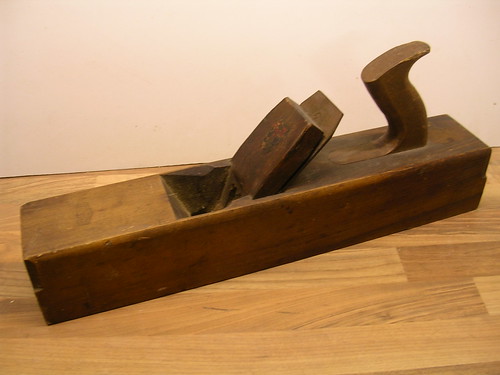Jacob
What goes around comes around.
Strike the heel as has been said. Most woodies (large and small) have the heel rounded off so it will take a few bashes from a mallet without being damaged.
I've got a "Salmen" or two too. More or less identical to Marples of the same vintage (1940 or later). Typical school plane.
I wouldn't bother about the scratches except to make the bottom flat (i.e. co-planar, not the same as "smooth"). They won't affect performance.
NB the "heel" is the corner between the back end and the top faces.
I've got a "Salmen" or two too. More or less identical to Marples of the same vintage (1940 or later). Typical school plane.
I wouldn't bother about the scratches except to make the bottom flat (i.e. co-planar, not the same as "smooth"). They won't affect performance.
NB the "heel" is the corner between the back end and the top faces.


































